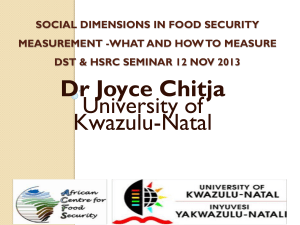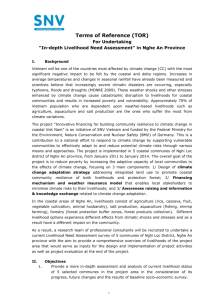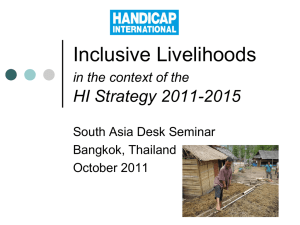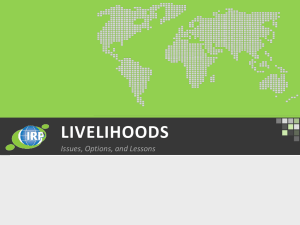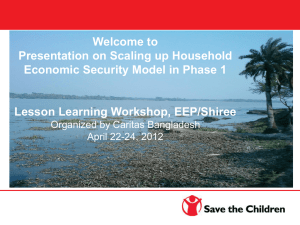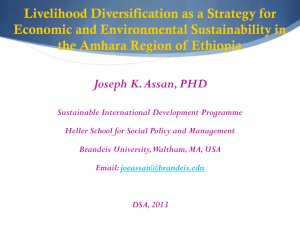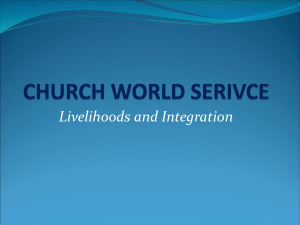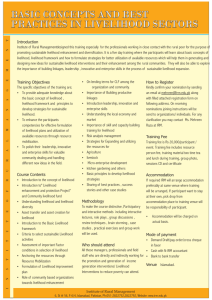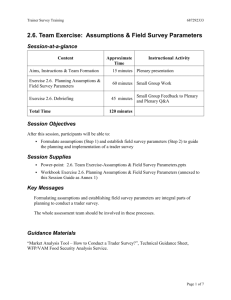PowerPoint-Präsentation
advertisement
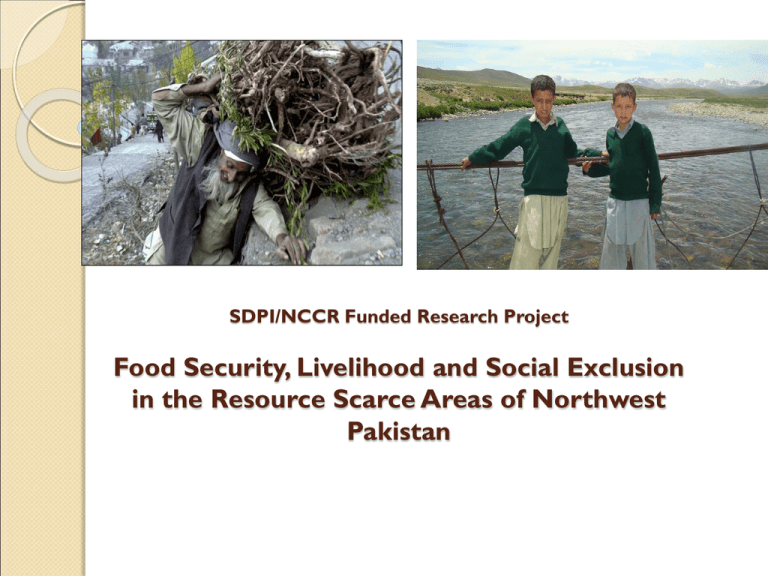
SDPI/NCCR Funded Research Project Food Security, Livelihood and Social Exclusion in the Resource Scarce Areas of Northwest Pakistan The Team P.I. Dr. Babar Shahbaz Co. P.I. Prof. Dr. Tanvir Ali Research Associate (Ph.D. student) Research Assistants (M.Sc. Hons. Students) Backstopping: SDPI & Zurich University State of the Research / Review of Literature Poverty is multidimensional The debates surrounding sustainable livelihoods recognise the diversity of activities in which people are involved Institutional and policy reforms targeting sustainable rural development offer increased opportunities for some groups of society, who can invest in better livelihoods, other (poor and marginalized) may suffer from exclusion and increased vulnerability In marginal and resource-poor areas, this quest for livelihoods security (and access to livelihood assets) takes place in a context where opportunities for improving livelihoods are scarce – which in turn leads (again) to social exclusion for some groups State of the Research / Review of Literature There is a close relationship between poverty, food insecurity and violent conflicts Research gaps Multidimensionality of poverty, livelihoods and vulnerability; & linkages with (natural) resource and food scarcity the processes and outcomes regarding competition on (alternative) opportunities to improve livelihoods – especially in marginal and resource-poor areas. how contestations around scarce opportunities for livelihood diversifications can lead to conflicts and inclusion/exclusion Neo-liberal reforms, social safety nets, decentralisations etc. are causing major changes in rural life; they offer opportunities to some, while excluding others Livelihood futures in resource scarce areas Hypothesis The quest by the rural people for alternative (non-natural resource based) livelihood strategies and alternative means for food security lead to, or enhance conflicts, unequal power relations and exclusion/marginality for certain social groups Objectives Objective 1:To examine the livelihood patterns, state of food security and natural resource in the study regions ◦ What are the livelihood strategies practised over time? ◦ What is the state of food security and of the endowment of natural resources in the study regions (at intra- and interhousehold level)? ◦ Are there any disparities or exclusions (for example on the basis of gender, ethnicity etc.) in the context of food security and in the natural resources entitlements in the study regions? Objective 2:To identify and examine livelihood alternatives options, support structures and access of people to these options ◦ What are the alternative and innovative livelihood options (or opportunities) and support structures available ◦ Who has access to these opportunities and is able to exploit the alternative livelihood opportunities and who is excluded from mainstream development? ◦ How are the national and regional policies dealing with the livelihood insecurities, exclusion and social conflict issues? Objective 3: Getting research into practice ◦ What are the main policy messages emerged out of research? ◦ How can we provide policy direction to emerging social safety networks? Resource-scarce Area Climate Change Dynamics of Livelihood Patterns Food Security Livelihood Options (non NR) Access Exclusion / Inclusion Natural Resources Support Structures Conflicts Local Getting Research into Practice Neo-liberal policies National Global Methodology Study Region: Mountainous Districts of KPK Natural Resource Degradation Deforestation Soil erosion Water scarcity Climatic extremes Development Disparities District wise HDI in KPK Red box: Mountainous districts, So Source SDPI-WFP Source SDPI-WFP (2009) Methodology Study Region: Mountainous Districts of KPK Desk study and review of literature on the issues of livelihood analysis, exclusion, marginality, food security etc. in the areas selected for proposed research project Food security assessment and analysis. Food availability, access, absorption and food quality would be some of the indicators selected for analysis. Empirical data collection on livelihood patterns, social safety nets and stakeholders’ analysis (power relations) in the perspectives of livelihoods’ alternatives and support structures. Identification and analysis of the dynamics of inclusion, exclusion, social tensions, and conflicts. Analysis of data for individual case studies and comparisons of the cases Overall analysis and synthesis Expected outputs and outcomes PhD and M.Sc. studiues Institutional capacity building North-South collaboration Extending the network Scientific papers and extension articles on food security assessment, power relations, processes of inclusion and exclusion from rural development policies and alternate livelihood options etc.
